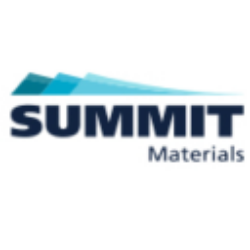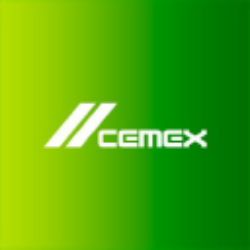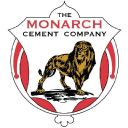EXP

Eagle Materials Inc.
EXP
(3.2)247,87 USD
19.18% ROA
35.66% ROE
19.84x PER
9.699.753.880,00 USD
82.03% DER
0.35% Yield
21.32% NPM
Eagle Materials Inc. Stock Analysis
Eagle Materials Inc. Fundamental Analysis
Fundamental analysis in stock investing is like studying the foundation of a house before buying it. It involves looking at a company's financial health, like its earnings, assets, and debts, to determine if it's a good investment based on its fundamental strength and potential for growth.
| # | Analysis | Rating |
|---|---|---|
| 1 |
ROE
ROE surpassing expectations (39.94%) highlights strong profitability and efficient use of shareholders' equity, making it an appealing investment prospect. |
|
| 2 |
ROA
This stock has a great ability to make a lot of money from the things it owns, which makes it a really good investment for smart investors. |
|
| 3 |
Revenue Growth
With continuous growth in revenue over the last five years, this company has proven to be a lucrative investment option, showcasing its strong financial performance. |
|
| 4 |
Net Profit Growth
Over the last five years, this company's net profit has shown continuous growth, reflecting a robust financial performance and making it an attractive choice for potential investors. |
|
| 5 |
Dividend
The company's consistent dividend distribution over the past five years reflects its dedication to providing shareholders with steady returns, making it an appealing choice for investors seeking income stability. |
|
| 6 |
DER
The stock maintains a fair debt to equity ratio (84%), indicating a reasonable balance between the money it owes and the ownership it possesses. |
|
| 7 |
Assets Growth
This company's revenue has shown remarkable growth over the past three years, making it an excellent choice for seeking a consistently prosperous investment. |
|
| 8 |
Buffet Intrinsic Value
Based on Warren Buffett's formula, the company's stock appears undervalued (1.724), presenting an attractive investment chance with its intrinsic value surpassing the current market price. |
|
| 9 |
PBV
The stock's elevated P/BV ratio (4.72x) raises concerns about its overvaluation, making it an imprudent choice for investors seeking value. |
|
| 10 |
Graham Number
The company's Graham number suggests that its stock price is overestimated, implying that it may not be a promising investment opportunity. |
|
| 11 |
Dividend Growth
Investors should note the company's stagnant dividend growth over the past three years, indicating limited profitability and potentially diminishing returns. |
Eagle Materials Inc. Technical Analysis
Technical analysis in stock investing is like reading the patterns on a weather map to predict future weather conditions. It involves studying past stock price movements and trading volumes to make predictions about where a stock's price might go next, without necessarily looking at the company's financial health.
| # | Analysis | Recommendation |
|---|---|---|
| 1 | Awesome Oscillator | Buy |
| 2 | MACD | Buy |
| 3 | RSI | Hold |
| 4 | Stoch RSI | Sell |
Eagle Materials Inc. Price Chart
Financial Statements
Financial statements are like report cards for companies. They show how much money a company makes (income statement), what it owns and owes (balance sheet), and where it spends its money (cash flow statement), helping stock investors understand if a company is healthy and worth investing in.
Income Statements
An income statement for a company is like a scoreboard for its profits and losses. It shows how much money the company made (revenue) and how much it spent to make that money (expenses), helping stock investors see if a company is making a profit or not.
Revenue in stock investing is the total amount of money a company earns from its sales, and it's a key factor that investors consider to assess a company's financial performance and growth potential.
| Year | Revenue | Growth |
|---|---|---|
| 1993 | 166.800.000 | |
| 1994 | 194.300.000 | 14.15% |
| 1995 | 222.600.000 | 12.71% |
| 1996 | 239.400.000 | 7.02% |
| 1997 | 297.300.000 | 19.48% |
| 1998 | 336.100.000 | 11.54% |
| 1999 | 418.695.000 | 19.73% |
| 2000 | 441.127.000 | 5.09% |
| 2001 | 471.083.000 | 6.36% |
| 2002 | 501.257.000 | 6.02% |
| 2003 | 502.622.000 | 0.27% |
| 2004 | 616.541.000 | 18.48% |
| 2005 | 859.702.000 | 28.28% |
| 2006 | 922.401.000 | 6.8% |
| 2007 | 749.553.000 | -23.06% |
| 2008 | 602.182.000 | -24.47% |
| 2009 | 467.905.000 | -28.7% |
| 2010 | 462.180.000 | -1.24% |
| 2011 | 495.023.000 | 6.63% |
| 2012 | 642.562.000 | 22.96% |
| 2013 | 898.396.000 | 28.48% |
| 2014 | 1.066.368.000 | 15.75% |
| 2015 | 1.143.492.000 | 6.74% |
| 2016 | 1.211.220.000 | 5.59% |
| 2017 | 1.386.520.000 | 12.64% |
| 2018 | 1.393.241.000 | 0.48% |
| 2019 | 1.450.814.000 | 3.97% |
| 2020 | 1.622.642.000 | 10.59% |
| 2021 | 1.861.522.000 | 12.83% |
| 2022 | 2.148.069.000 | 13.34% |
| 2023 | 2.488.944.000 | 13.7% |
| 2023 | 2.259.297.000 | -10.16% |
| 2024 | 2.434.756.000 | 7.21% |
Research and Development Expenses are the costs a company incurs to create and improve its products or services, which can be important for investors to evaluate a company's innovation and potential for future growth.
| Year | Research and Development Expenses | Growth |
|---|---|---|
| 1993 | 0 | |
| 1994 | 0 | 0% |
| 1995 | 0 | 0% |
| 1996 | 0 | 0% |
| 1997 | 0 | 0% |
| 1998 | 0 | 0% |
| 1999 | 0 | 0% |
| 2000 | 0 | 0% |
| 2001 | 0 | 0% |
| 2002 | 0 | 0% |
| 2003 | 0 | 0% |
| 2004 | 0 | 0% |
| 2005 | 0 | 0% |
| 2006 | 0 | 0% |
| 2007 | 0 | 0% |
| 2008 | 0 | 0% |
| 2009 | 0 | 0% |
| 2010 | 0 | 0% |
| 2011 | 0 | 0% |
| 2012 | 0 | 0% |
| 2013 | 0 | 0% |
| 2014 | 0 | 0% |
| 2015 | 0 | 0% |
| 2016 | 0 | 0% |
| 2017 | 0 | 0% |
| 2018 | 0 | 0% |
| 2019 | 0 | 0% |
| 2020 | 0 | 0% |
| 2021 | 0 | 0% |
| 2022 | 0 | 0% |
| 2023 | 0 | 0% |
| 2023 | 0 | 0% |
| 2024 | 0 | 0% |
General and Administrative Expenses are the costs a company incurs to run its day-to-day operations, such as office rent, salaries, and utilities, which investors consider to understand a company's overall efficiency and management effectiveness.
| Year | General and Administrative Expenses | Growth |
|---|---|---|
| 1993 | 0 | |
| 1994 | 0 | 0% |
| 1995 | 0 | 0% |
| 1996 | 3.900.000 | 100% |
| 1997 | 3.800.000 | -2.63% |
| 1998 | 4.400.000 | 13.64% |
| 1999 | 4.683.000 | 6.04% |
| 2000 | 4.691.000 | 0.17% |
| 2001 | 5.486.000 | 14.49% |
| 2002 | 0 | 0% |
| 2003 | 9.272.000 | 100% |
| 2004 | 10.280.000 | 9.81% |
| 2005 | 16.370.000 | 37.2% |
| 2006 | 20.344.000 | 19.53% |
| 2007 | 18.756.000 | -8.47% |
| 2008 | 16.901.000 | -10.98% |
| 2009 | 15.886.000 | -6.39% |
| 2010 | 16.667.000 | 4.69% |
| 2011 | 19.617.000 | 15.04% |
| 2012 | 23.918.000 | 17.98% |
| 2013 | 24.552.000 | 2.58% |
| 2014 | 30.751.000 | 20.16% |
| 2015 | 37.193.000 | 17.32% |
| 2016 | 33.940.000 | -9.58% |
| 2017 | 41.205.000 | 17.63% |
| 2018 | 37.371.000 | -10.26% |
| 2019 | 65.410.000 | 42.87% |
| 2020 | 49.511.000 | -32.11% |
| 2021 | 46.801.000 | -5.79% |
| 2022 | 53.630.000 | 12.73% |
| 2023 | 66.304.000 | 19.11% |
| 2023 | 59.795.000 | -10.89% |
| 2024 | 62.596.000 | 4.47% |
EBITDA stands for Earnings Before Interest, Taxes, Depreciation, and Amortization. It is a measure that helps stock investors analyze a company's profitability by looking at its earnings without considering certain expenses. This helps to get a clearer picture of the company's financial performance and its ability to generate cash flow.
| Year | EBITDA | Growth |
|---|---|---|
| 1993 | 31.400.000 | |
| 1994 | 49.700.000 | 36.82% |
| 1995 | 66.900.000 | 25.71% |
| 1996 | 76.800.000 | 12.89% |
| 1997 | 102.500.000 | 25.07% |
| 1998 | 134.300.000 | 23.68% |
| 1999 | 185.029.000 | 27.42% |
| 2000 | 119.486.000 | -54.85% |
| 2001 | 109.161.000 | -9.46% |
| 2002 | 132.994.000 | 17.92% |
| 2003 | 115.048.000 | -15.6% |
| 2004 | 169.868.000 | 32.27% |
| 2005 | 259.829.000 | 34.62% |
| 2006 | 316.992.000 | 18.03% |
| 2007 | 211.383.000 | -49.96% |
| 2008 | 142.782.000 | -48.05% |
| 2009 | 111.579.000 | -27.96% |
| 2010 | 83.716.000 | -33.28% |
| 2011 | 91.666.000 | 8.67% |
| 2012 | 156.822.000 | 41.55% |
| 2013 | 232.296.000 | 32.49% |
| 2014 | 302.882.000 | 23.3% |
| 2015 | 326.528.000 | 7.24% |
| 2016 | 369.896.000 | 11.72% |
| 2017 | 411.566.000 | 10.12% |
| 2018 | 230.767.000 | -78.35% |
| 2019 | 407.668.000 | 43.39% |
| 2020 | 597.685.000 | 31.79% |
| 2021 | 601.624.000 | 0.65% |
| 2022 | 724.190.000 | 16.92% |
| 2023 | 817.572.000 | 11.42% |
| 2023 | 811.069.000 | -0.8% |
| 2024 | 838.276.000 | 3.25% |
Gross profit is the money a company makes from selling its products or services after subtracting the cost of producing or providing them, and it is an important measure for investors to understand a company's profitability.
| Year | Gross Profit | Growth |
|---|---|---|
| 1993 | 33.200.000 | |
| 1994 | 52.000.000 | 36.15% |
| 1995 | 69.400.000 | 25.07% |
| 1996 | 80.700.000 | 14% |
| 1997 | 106.300.000 | 24.08% |
| 1998 | 138.700.000 | 23.36% |
| 1999 | 189.712.000 | 26.89% |
| 2000 | 124.177.000 | -52.78% |
| 2001 | 78.839.000 | -57.51% |
| 2002 | 101.857.000 | 22.6% |
| 2003 | 91.298.000 | -11.57% |
| 2004 | 145.652.000 | 37.32% |
| 2005 | 237.600.000 | 38.7% |
| 2006 | 297.296.000 | 20.08% |
| 2007 | 150.232.000 | -97.89% |
| 2008 | 75.578.000 | -98.78% |
| 2009 | 49.325.000 | -53.22% |
| 2010 | 35.577.000 | -38.64% |
| 2011 | 40.477.000 | 12.11% |
| 2012 | 103.245.000 | 60.8% |
| 2013 | 185.459.000 | 44.33% |
| 2014 | 254.133.000 | 27.02% |
| 2015 | 231.617.000 | -9.72% |
| 2016 | 312.045.000 | 25.77% |
| 2017 | 338.756.000 | 7.89% |
| 2018 | 326.568.000 | -3.73% |
| 2019 | 331.262.000 | 1.42% |
| 2020 | 408.355.000 | 18.88% |
| 2021 | 519.614.000 | 21.41% |
| 2022 | 639.266.000 | 18.72% |
| 2023 | 836.072.000 | 23.54% |
| 2023 | 685.321.000 | -22% |
| 2024 | 747.472.000 | 8.31% |
Net income in stock investing is like the money a company actually gets to keep as profit after paying all its bills, and it's an important measure to understand how well a company is doing financially.
| Year | Net Profit | Growth |
|---|---|---|
| 1993 | 10.200.000 | |
| 1994 | 21.800.000 | 53.21% |
| 1995 | 33.900.000 | 35.69% |
| 1996 | 41.800.000 | 18.9% |
| 1997 | 56.500.000 | 26.02% |
| 1998 | 77.300.000 | 26.91% |
| 1999 | 108.232.000 | 28.58% |
| 2000 | 59.429.000 | -82.12% |
| 2001 | 39.706.000 | -49.67% |
| 2002 | 57.606.000 | 31.07% |
| 2003 | 66.901.000 | 13.89% |
| 2004 | 106.687.000 | 37.29% |
| 2005 | 160.984.000 | 33.73% |
| 2006 | 202.664.000 | 20.57% |
| 2007 | 97.768.000 | -107.29% |
| 2008 | 41.764.000 | -134.1% |
| 2009 | 28.950.000 | -44.26% |
| 2010 | 14.849.000 | -94.96% |
| 2011 | 18.732.000 | 20.73% |
| 2012 | 57.744.000 | 67.56% |
| 2013 | 124.243.000 | 53.52% |
| 2014 | 186.853.000 | 33.51% |
| 2015 | 152.592.000 | -22.45% |
| 2016 | 198.219.000 | 23.02% |
| 2017 | 256.632.000 | 22.76% |
| 2018 | 68.860.000 | -272.69% |
| 2019 | 70.894.000 | 2.87% |
| 2020 | 339.444.000 | 79.11% |
| 2021 | 374.247.000 | 9.3% |
| 2022 | 461.540.000 | 18.91% |
| 2023 | 602.212.000 | 23.36% |
| 2023 | 477.639.000 | -26.08% |
| 2024 | 535.368.000 | 10.78% |
EPS, or earnings per share, is a measure that shows how much profit a company has earned for each outstanding share of its stock, and it is important for stock investors as it helps understand the profitability of a company and compare it with other companies in the market.
| Year | Earning per Share (EPS) | Growth |
|---|---|---|
| 1993 | 0 | |
| 1994 | 0 | 0% |
| 1995 | 0 | 0% |
| 1996 | 1 | 0% |
| 1997 | 1 | 0% |
| 1998 | 1 | 100% |
| 1999 | 2 | 0% |
| 2000 | 1 | 0% |
| 2001 | 1 | 0% |
| 2002 | 1 | 100% |
| 2003 | 1 | 0% |
| 2004 | 2 | 0% |
| 2005 | 3 | 66.67% |
| 2006 | 4 | 25% |
| 2007 | 2 | -100% |
| 2008 | 1 | 0% |
| 2009 | 1 | 0% |
| 2010 | 0 | 0% |
| 2011 | 0 | 0% |
| 2012 | 1 | 100% |
| 2013 | 3 | 50% |
| 2014 | 4 | 33.33% |
| 2015 | 3 | 0% |
| 2016 | 4 | 25% |
| 2017 | 5 | 20% |
| 2018 | 1 | -400% |
| 2019 | 2 | 0% |
| 2020 | 8 | 85.71% |
| 2021 | 9 | 22.22% |
| 2022 | 13 | 25% |
| 2023 | 17 | 29.41% |
| 2023 | 14 | -30.77% |
| 2024 | 16 | 13.33% |
Cashflow Statements
Cashflow statements show the movement of money in and out of a company, helping stock investors understand how much money a company makes and spends. By examining cashflow statements, investors can assess if a company is generating enough cash to pay its bills, invest in growth, and provide returns to stockholders.
Free cash flow is the leftover cash that a company generates after covering its operating expenses and capital expenditures, which is important for stock investors as it shows how much money a company has available to invest in growth, pay dividends, or reduce debt.
| Year | Free Cashflow | Growth |
|---|---|---|
| 1993 | 18.300.000 | |
| 1994 | 35.500.000 | 48.45% |
| 1995 | 36.500.000 | 2.74% |
| 1996 | 57.000.000 | 35.96% |
| 1997 | 75.000.000 | 24% |
| 1998 | 58.900.000 | -27.33% |
| 1999 | 90.608.000 | 34.99% |
| 2000 | 85.730.000 | -5.69% |
| 2001 | 101.619.000 | 15.64% |
| 2002 | 106.373.000 | 4.47% |
| 2003 | 100.258.000 | -6.1% |
| 2004 | 134.829.000 | 25.64% |
| 2005 | 115.317.000 | -16.92% |
| 2006 | 105.554.000 | -9.25% |
| 2007 | 7.895.000 | -1236.97% |
| 2008 | 63.307.000 | 87.53% |
| 2009 | 50.787.000 | -24.65% |
| 2010 | 26.859.000 | -89.09% |
| 2011 | 34.753.000 | 22.71% |
| 2012 | 71.396.000 | 51.32% |
| 2013 | 111.143.000 | 35.76% |
| 2014 | 122.548.000 | 9.31% |
| 2015 | 176.204.000 | 30.45% |
| 2016 | 274.660.000 | 35.85% |
| 2017 | 205.708.000 | -33.52% |
| 2018 | 181.411.000 | -13.39% |
| 2019 | 267.182.000 | 32.1% |
| 2020 | 589.140.000 | 54.65% |
| 2021 | 443.050.000 | -32.97% |
| 2022 | 431.583.000 | -2.66% |
| 2023 | 142.898.000 | -202.02% |
| 2023 | 443.633.000 | 67.79% |
| 2024 | 99.508.000 | -345.83% |
Operating cash flow represents the cash generated or consumed by a company's day-to-day operations, excluding external investing or financing activities, and is crucial for stock investors as it shows how much cash a company is generating from its core business operations.
| Year | Operating Cashflow | Growth |
|---|---|---|
| 1993 | 26.500.000 | |
| 1994 | 41.200.000 | 35.68% |
| 1995 | 51.800.000 | 20.46% |
| 1996 | 62.900.000 | 17.65% |
| 1997 | 88.100.000 | 28.6% |
| 1998 | 92.700.000 | 4.96% |
| 1999 | 118.627.000 | 21.86% |
| 2000 | 101.980.000 | -16.32% |
| 2001 | 120.643.000 | 15.47% |
| 2002 | 120.663.000 | 0.02% |
| 2003 | 112.685.000 | -7.08% |
| 2004 | 157.202.000 | 28.32% |
| 2005 | 188.246.000 | 16.49% |
| 2006 | 242.423.000 | 22.35% |
| 2007 | 104.752.000 | -131.43% |
| 2008 | 79.385.000 | -31.95% |
| 2009 | 64.566.000 | -22.95% |
| 2010 | 44.083.000 | -46.46% |
| 2011 | 60.852.000 | 27.56% |
| 2012 | 124.407.000 | 51.09% |
| 2013 | 170.633.000 | 27.09% |
| 2014 | 234.121.000 | 27.12% |
| 2015 | 265.767.000 | 11.91% |
| 2016 | 331.598.000 | 19.85% |
| 2017 | 337.665.000 | 1.8% |
| 2018 | 350.284.000 | 3.6% |
| 2019 | 399.301.000 | 12.28% |
| 2020 | 643.073.000 | 37.91% |
| 2021 | 517.171.000 | -24.34% |
| 2022 | 541.726.000 | 4.53% |
| 2023 | 172.352.000 | -214.31% |
| 2023 | 563.938.000 | 69.44% |
| 2024 | 132.636.000 | -325.18% |
Capex, short for capital expenditures, refers to the money a company spends on acquiring or upgrading tangible assets like buildings, equipment, or technology, which is important for stock investors as it indicates how much a company is investing in its infrastructure to support future growth and profitability.
| Year | Capital Expenditure | Growth |
|---|---|---|
| 1993 | 8.200.000 | |
| 1994 | 5.700.000 | -43.86% |
| 1995 | 15.300.000 | 62.75% |
| 1996 | 5.900.000 | -159.32% |
| 1997 | 13.100.000 | 54.96% |
| 1998 | 33.800.000 | 61.24% |
| 1999 | 28.019.000 | -20.63% |
| 2000 | 16.250.000 | -72.42% |
| 2001 | 19.024.000 | 14.58% |
| 2002 | 14.290.000 | -33.13% |
| 2003 | 12.427.000 | -14.99% |
| 2004 | 22.373.000 | 44.46% |
| 2005 | 72.929.000 | 69.32% |
| 2006 | 136.869.000 | 46.72% |
| 2007 | 96.857.000 | -41.31% |
| 2008 | 16.078.000 | -502.42% |
| 2009 | 13.779.000 | -16.68% |
| 2010 | 17.224.000 | 20% |
| 2011 | 26.099.000 | 34.01% |
| 2012 | 53.011.000 | 50.77% |
| 2013 | 59.490.000 | 10.89% |
| 2014 | 111.573.000 | 46.68% |
| 2015 | 89.563.000 | -24.57% |
| 2016 | 56.938.000 | -57.3% |
| 2017 | 131.957.000 | 56.85% |
| 2018 | 168.873.000 | 21.86% |
| 2019 | 132.119.000 | -27.82% |
| 2020 | 53.933.000 | -144.97% |
| 2021 | 74.121.000 | 27.24% |
| 2022 | 110.143.000 | 32.7% |
| 2023 | 29.454.000 | -273.95% |
| 2023 | 120.305.000 | 75.52% |
| 2024 | 33.128.000 | -263.15% |
Balance Sheet
Balance sheets provide a snapshot of a company's financial health and its assets (such as cash, inventory, and property) and liabilities (like debts and obligations) at a specific point in time. For stock investors, balance sheets help assess the company's overall worth and evaluate its ability to meet financial obligations and support future growth.
Equity refers to the ownership interest or stake that shareholders have in a company, representing their claim on its assets and earnings after all debts and liabilities are paid.
| Year | Equity | Growth |
|---|---|---|
| 1993 | 170.800.000 | |
| 1994 | 183.400.000 | 6.87% |
| 1995 | 216.500.000 | 15.29% |
| 1996 | 239.400.000 | 9.57% |
| 1997 | 274.800.000 | 12.88% |
| 1998 | 279.900.000 | 1.82% |
| 1999 | 340.472.000 | 17.79% |
| 2000 | 392.320.000 | 13.22% |
| 2001 | 427.832.000 | 8.3% |
| 2002 | 479.832.000 | 10.84% |
| 2003 | 439.022.000 | -9.3% |
| 2004 | 485.368.000 | 9.55% |
| 2005 | 464.738.000 | -4.44% |
| 2006 | 546.046.000 | 14.89% |
| 2007 | 405.687.000 | -34.6% |
| 2008 | 427.827.000 | 5.17% |
| 2009 | 445.362.000 | 3.94% |
| 2010 | 459.564.000 | 3.09% |
| 2011 | 472.511.000 | 2.74% |
| 2012 | 696.170.000 | 32.13% |
| 2013 | 831.499.000 | 16.28% |
| 2014 | 1.010.593.000 | 17.72% |
| 2015 | 1.040.531.000 | 2.88% |
| 2016 | 1.203.450.000 | 13.54% |
| 2017 | 1.417.690.000 | 15.11% |
| 2018 | 1.209.487.000 | -17.21% |
| 2019 | 967.843.000 | -24.97% |
| 2020 | 1.358.990.000 | 28.78% |
| 2021 | 1.133.556.000 | -19.89% |
| 2022 | 1.185.694.000 | 4.4% |
| 2023 | 1.306.634.000 | 9.26% |
| 2023 | 1.308.535.000 | 0.15% |
| 2024 | 1.350.798.000 | 3.13% |
Assets represent the valuable resources that a company owns, such as cash, inventory, property, and equipment, and understanding a company's assets helps investors assess its value and potential for generating future profits.
| Year | Assets | Growth |
|---|---|---|
| 1993 | 257.300.000 | |
| 1994 | 250.100.000 | -2.88% |
| 1995 | 269.600.000 | 7.23% |
| 1996 | 305.600.000 | 11.78% |
| 1997 | 351.100.000 | 12.96% |
| 1998 | 364.700.000 | 3.73% |
| 1999 | 438.139.000 | 16.76% |
| 2000 | 809.960.000 | 45.91% |
| 2001 | 743.352.000 | -8.96% |
| 2002 | 712.078.000 | -4.39% |
| 2003 | 692.975.000 | -2.76% |
| 2004 | 780.001.000 | 11.16% |
| 2005 | 888.916.000 | 12.25% |
| 2006 | 971.410.000 | 8.49% |
| 2007 | 1.114.847.000 | 12.87% |
| 2008 | 1.066.668.000 | -4.52% |
| 2009 | 1.013.776.000 | -5.22% |
| 2010 | 982.810.000 | -3.15% |
| 2011 | 985.145.000 | 0.24% |
| 2012 | 1.476.233.000 | 33.27% |
| 2013 | 1.511.529.000 | 2.34% |
| 2014 | 1.882.591.000 | 19.71% |
| 2015 | 1.883.635.000 | 0.06% |
| 2016 | 2.247.124.000 | 16.18% |
| 2017 | 2.368.003.000 | 5.1% |
| 2018 | 2.169.163.000 | -9.17% |
| 2019 | 2.961.020.000 | 26.74% |
| 2020 | 2.838.681.000 | -4.31% |
| 2021 | 2.579.652.000 | -10.04% |
| 2022 | 2.781.002.000 | 7.24% |
| 2023 | 2.917.094.000 | 4.67% |
| 2023 | 2.982.533.000 | 2.19% |
| 2024 | 3.042.867.000 | 1.98% |
Liabilities refer to the financial obligations or debts that a company owes to creditors or external parties, and understanding a company's liabilities is important for investors as it helps assess the company's financial risk and ability to meet its obligations.
| Year | Liabilities | Growth |
|---|---|---|
| 1993 | 86.500.000 | |
| 1994 | 66.700.000 | -29.69% |
| 1995 | 53.100.000 | -25.61% |
| 1996 | 66.200.000 | 19.79% |
| 1997 | 76.300.000 | 13.24% |
| 1998 | 84.800.000 | 10.02% |
| 1999 | 97.667.000 | 13.17% |
| 2000 | 417.640.000 | 76.61% |
| 2001 | 315.520.000 | -32.37% |
| 2002 | 232.246.000 | -35.86% |
| 2003 | 253.953.000 | 8.55% |
| 2004 | 294.633.000 | 13.81% |
| 2005 | 424.178.000 | 30.54% |
| 2006 | 425.364.000 | 0.28% |
| 2007 | 709.160.000 | 40.02% |
| 2008 | 638.841.000 | -11.01% |
| 2009 | 568.414.000 | -12.39% |
| 2010 | 523.246.000 | -8.63% |
| 2011 | 512.634.000 | -2.07% |
| 2012 | 780.063.000 | 34.28% |
| 2013 | 680.030.000 | -14.71% |
| 2014 | 871.998.000 | 22.01% |
| 2015 | 843.104.000 | -3.43% |
| 2016 | 1.043.674.000 | 19.22% |
| 2017 | 950.313.000 | -9.82% |
| 2018 | 959.676.000 | 0.98% |
| 2019 | 1.993.177.000 | 51.85% |
| 2020 | 1.479.691.000 | -34.7% |
| 2021 | 1.446.096.000 | -2.32% |
| 2022 | 1.595.308.000 | 9.35% |
| 2023 | 1.610.460.000 | 0.94% |
| 2023 | 1.673.998.000 | 3.8% |
| 2024 | 1.692.069.000 | 1.07% |
Eagle Materials Inc. Financial Ratio (TTM)
Valuation Metrics
- Revenue per Share
- 67.19
- Net Income per Share
- 14.54
- Price to Earning Ratio
- 19.84x
- Price To Sales Ratio
- 4.28x
- POCF Ratio
- 17.5
- PFCF Ratio
- 22.11
- Price to Book Ratio
- 7.21
- EV to Sales
- 4.76
- EV Over EBITDA
- 14.21
- EV to Operating CashFlow
- 19.38
- EV to FreeCashFlow
- 24.57
- Earnings Yield
- 0.05
- FreeCashFlow Yield
- 0.05
- Market Cap
- 9,70 Bil.
- Enterprise Value
- 10,78 Bil.
- Graham Number
- 114.47
- Graham NetNet
- -37.02
Income Statement Metrics
- Net Income per Share
- 14.54
- Income Quality
- 1.13
- ROE
- 0.37
- Return On Assets
- 0.15
- Return On Capital Employed
- 0.22
- Net Income per EBT
- 0.77
- EBT Per Ebit
- 1
- Ebit per Revenue
- 0.28
- Effective Tax Rate
- 0.23
Margins
- Sales, General, & Administrative to Revenue
- 0.03
- Research & Developement to Revenue
- 0
- Stock Based Compensation to Revenue
- 0.01
- Gross Profit Margin
- 0.3
- Operating Profit Margin
- 0.28
- Pretax Profit Margin
- 0.28
- Net Profit Margin
- 0.21
Dividends
- Dividend Yield
- 0
- Dividend Yield %
- 0.35
- Payout Ratio
- 0.07
- Dividend Per Share
- 1
Operating Metrics
- Operating Cashflow per Share
- 16.48
- Free CashFlow per Share
- 13
- Capex to Operating CashFlow
- 0.21
- Capex to Revenue
- 0.05
- Capex to Depreciation
- 54.12
- Return on Invested Capital
- 0.14
- Return on Tangible Assets
- 0.19
- Days Sales Outstanding
- 45.26
- Days Payables Outstanding
- 34.46
- Days of Inventory on Hand
- 86.38
- Receivables Turnover
- 8.06
- Payables Turnover
- 10.59
- Inventory Turnover
- 4.23
- Capex per Share
- 3.48
Balance Sheet
- Cash per Share
- 1,38
- Book Value per Share
- 40,04
- Tangible Book Value per Share
- 25.69
- Shareholders Equity per Share
- 40.04
- Interest Debt per Share
- 34.08
- Debt to Equity
- 0.82
- Debt to Assets
- 0.36
- Net Debt to EBITDA
- 1.42
- Current Ratio
- 2.45
- Tangible Asset Value
- 0,87 Bil.
- Net Current Asset Value
- -0,98 Bil.
- Invested Capital
- 2600748000
- Working Capital
- 0,42 Bil.
- Intangibles to Total Assets
- 0.16
- Average Receivables
- 0,25 Bil.
- Average Payables
- 0,14 Bil.
- Average Inventory
- 372771000
- Debt to Market Cap
- 0.11
Dividends
Dividends in stock investing are like rewards that companies give to their shareholders. They are a portion of the company's profits distributed to investors, typically in the form of cash payments, as a way for them to share in the company's success.
| Year | Dividends | Growth |
|---|---|---|
| 1996 | 0 | |
| 1997 | 0 | 0% |
| 1998 | 0 | 0% |
| 1999 | 0 | 0% |
| 2000 | 0 | 0% |
| 2001 | 0 | 0% |
| 2002 | 0 | 0% |
| 2003 | 0 | 0% |
| 2004 | 7 | 100% |
| 2005 | 1 | -600% |
| 2006 | 1 | 0% |
| 2007 | 1 | 0% |
| 2008 | 1 | 0% |
| 2009 | 0 | 0% |
| 2010 | 0 | 0% |
| 2011 | 0 | 0% |
| 2012 | 0 | 0% |
| 2013 | 0 | 0% |
| 2014 | 0 | 0% |
| 2015 | 0 | 0% |
| 2016 | 0 | 0% |
| 2017 | 0 | 0% |
| 2018 | 0 | 0% |
| 2019 | 0 | 0% |
| 2020 | 0 | 0% |
| 2021 | 1 | 0% |
| 2022 | 1 | 100% |
| 2023 | 1 | 0% |
| 2024 | 1 | 0% |
Eagle Materials Inc. Profile
About Eagle Materials Inc.
Eagle Materials Inc., through its subsidiaries, produces and supplies heavy construction materials and light building materials in the United States. It operates through Cement, Concrete and Aggregates, Gypsum Wallboard, and Recycled Paperboard segments. The company engages in the mining of limestone for the manufacture, production, distribution, and sale of Portland cement; grinding and sale of slag; and mining of gypsum for the manufacture and sale of gypsum wallboards used to finish the interior walls and ceilings in residential, commercial, and industrial structures. It also manufactures and sells recycled paperboard to gypsum wallboard industry and other paperboard converters, as well as containerboard and lightweight packaging grades. In addition, the company engages in the sale of ready-mix concrete; and mining, extracting, production, and sale of aggregates, including crushed stones, sand, and gravel. Its products are used in commercial and residential construction; public construction projects; and projects to build, expand, and repair roads and highways. The company was formerly known as Centex Construction Products, Inc. and changed its name to Eagle Materials, Inc. in January 2004. Eagle Materials Inc. was founded in 1963 and is headquartered in Dallas, Texas.
- CEO
- Mr. Michael R. Haack
- Employee
- 2.500
- Address
-
5960 Berkshire Lane
Dallas, 75225
Eagle Materials Inc. Executives & BODs
| # | Name | Age |
|---|---|---|
| 1 |
Mr. Alex Haddock Senior Vice President of Investor Relations, Strategy & Corporate Development |
70 |
| 2 |
Mr. D. Craig Kesler CPA Executive Vice President of Finance & Administration and Chief Financial Officer |
70 |
| 3 |
Mr. Michael R. Haack Chief Executive Officer, President & Director |
70 |
| 4 |
Mr. Matthew M. Newby Executive Vice President, General Counsel & Secretary |
70 |
| 5 |
Mr. Tony Thompson Senior Vice President of Cement East |
70 |
| 6 |
Mr. Eric M. Cribbs President of American Gypsum Company |
70 |
| 7 |
Mr. William R. Devlin Senior Vice President, Controller & Chief Accounting Officer |
70 |
| 8 |
Tony Sneska Senior Vice President of Cement Sales & Marketing |
70 |









